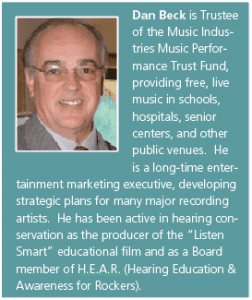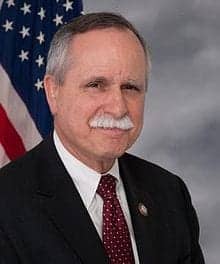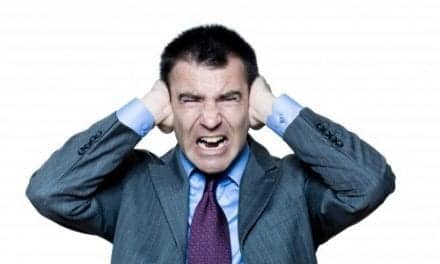EXPERT ROUNDTABLE: Music & Hearing | February 2017 Hearing Review
The magnitude and consequences of hearing loss are still lost on most consumers.
The hearing conservation message to date has been a polite one. The parental warning of “You’re going to go deaf!” has lost all cred with kids. The rock response of “If it’s too loud, then you’re too old” is the prevailing attitude of youth. Asking for the volume to be lowered is a virtual self-indictment of aging. It has a certain “Get off my lawn” sensibility!
According to the most recent statistics from the World Health Organization (WHO), there are approximately 360 million people—or 5.3% of the world’s population affected by hearing loss. Imagine that as more people than the entire population of the United States (325 million). Hearing loss is not a small issue.
However, the real concern is that, for all the research and advancements in medical health and technology, the hearing loss problem is growing. Even with the great knowledge of hearing care professionals and their steadfast warnings for greater care in our consumption of sound, modern society has turned up the volume, the magnitude of a hearing loss epidemic is apparent.

Why would we accept our cochleas to be force-fed? Are we allowing our ears to be gluttons for punishment?
Our hearing has struggled to survive through the entire Industrial Revolution, pounded by the internal combustion engine, and sustained by Henry Ford’s invention of the moving assembly line. In the name of progress, we have made so many innovations louder. Bi-planes became jets. A simple push mower became a lawn tractor. An acoustic orchestra, dynamic in its own right, became rock bands with amplifiers. And then we harnessed those amps into buds, and plugged them directly into our ears.
Yes, we like it loud! Football stadiums, speedways, electronic dance music festivals, and automatic rifle ranges are the galvanizers of our collective entertainment, but also examples of where we abuse our hearing. There is far less quiet countryside today, and our urbanized, plugged-in youth are generally averse to those pristine environments. Loud is in. Loud is power.
Ironically, while the volume has increasingly risen through the ages at dance halls, rock concerts, on our Walkman’s, iPods, and phones, the music makers have spent countless hours in multi-million dollar studios perfecting the perfect sound…only for the consumer to distort it through pulsing car speakers, if not through those little wires leading to our ears. It’s as if we pour a bottle of ketchup on an exquisitely prepared meal. Yes, we like ketchup, but maybe there are limits!
Historically, hearing loss has been marginalized in our society. In decades past, the onset of noise-induced and age-related hearing loss occurred more frequently in those waning years of life. Stunningly, life expectancy a 100 ago in the United States was only 48.4 years for men and 54.0 for women. With the notable exception of those who had lost their hearing in noisy jobs or to illness, only those who were then considered “very elderly” seemed to experience the issue of age-related hearing loss. Today, men live to an expected age of 76.4, and women now live to an anticipated 81.2 years. Our ears are required to last, with quality, for another 25 years. And with that, we have accelerated the damage to our hearing, and the effects of that destruction are beginning to impact us at a much earlier age. Are we now facing a full one-third of our lives or more hearing impaired? Imagine a large adult populous all with compromised hearing!
There has been much discussion in the media in recent times about how computerization is potentially negatively impacting human interaction. While the world moves faster through technology, we recess into phone-gazing and responding to life through our computer screens. It is a high-profile argument that will be debated for at least the coming decade.
However, what about a large portion of our society receding from social interaction due to noise-induced hearing loss? Imagine, an adult population suffering from the anxiety of their inability to hear. Imagine, the lost confidence of an experienced people marginalized because they cannot keep up with conversation. Imagine the ideas, the initiative, the energy, and in fact, the intelligence, we lose. What muted passions and what disabled confidence will derail our quality of life?
Yes, the hard-of-hearing get marginalized, and in turn, they often marginalize themselves. Society has little patience for those who can’t hear. We have no time to repeat our words. Life is moving too fast. Communications for many will simply be minimized and in some cases completely crushed. Hearing loss for those who retreat from human interaction will simply become another symptom of anti-intellectualism. Shared emotions, thoughts, and experience will die in silence.
The hearing conservation message to date has been a polite one. The parental warning of “You’re going to go deaf!” has lost all cred with kids. The rock response of “If it’s too loud, then you’re too old” is the prevailing attitude of youth. Asking for the volume to be lowered is a virtual self-indictment of aging. It has a certain “Get off my lawn” sensibility!
There are many noble and well-intentioned grassroots organizations spreading the word about hearing conservation. They distribute literature. They hand out earplugs at clubs and concert halls. They have created initiatives to educate consumers to the impact of loud sound and the potential for hearing lose. Hearing care professionals worldwide strongly encourage and support those efforts. There are governmental agencies and health organizations that carry forth those same initiatives. However, there must be a greater national and international movement put forth to respond to a looming invisible epidemic.
Yes, hearing professionals can treat our symptoms. They can equip us with technology to help compensate for our hearing loss. However, at this point, there remains no cure.

Have we really come that far?
CORRESPONDENCE can be addressed to Dan Beck at: [email protected]
Citation for this article: Beck D. Have we really come that far? Hearing Review. 2017;24(2):24-25.
MORE ARTICLES IN THIS SERIES…
Expert Roundtable: Music & Hearing (February 2017 Hearing Review)
Expert Roundtable: Music & Hearing on the 100th Anniversary of Recorded Jazz, By Marshall Chasin, AuD, Bethany Ewald Bultman, and Dan Beck, Guest-editors
Jazz: An Acoustical Revolution, By Bethany Ewald Bultman
The Evolution of Hearing Conservation Guidelines and Standards in the United States, By Mark Stephenson, PhD
A Historical Perspective on Hearing Protection, By Patricia A. Johnson, AuD
Ear Infections Over the Ages, By Kenneth Einhorn, MD
Promoting Safe Sounds in the Birth City of American Music, By John J. Hutchings, MD, and Bethany Ewald Bultman
Temporary Threshold Shift (TTS) Is NOT So Temporary, By Marshall Chasin, AuD
Have We Really Come That Far? By Dan Beck





